See other behavioral demonstrations:
Embedded Reasoning
KEEL Technology and Behavioral Modeling
KEEL was developed to package human judgment and
reasoning for embedded applications. These activities are complex (dynamic,
non-linear, inter-related, and multi-dimensional). The KEEL Dynamic Graphical
Language is particularly well suited for capturing, testing, packaging,
auditing, and explaining models with these characteristics. Human behavior is
the result of interpreting numerous factors that drive the behavior. The
Yerkes-Dodson / Hans Eysenck models depicted in this demonstration show how
information is interpreted and how factors cause the curves (non-linear
relationships) to be stimulated as the input factors change. Once the models
are created, they are well suited for embedding in broader real-time
applications where the models of human behavior can be used to predict future
events.
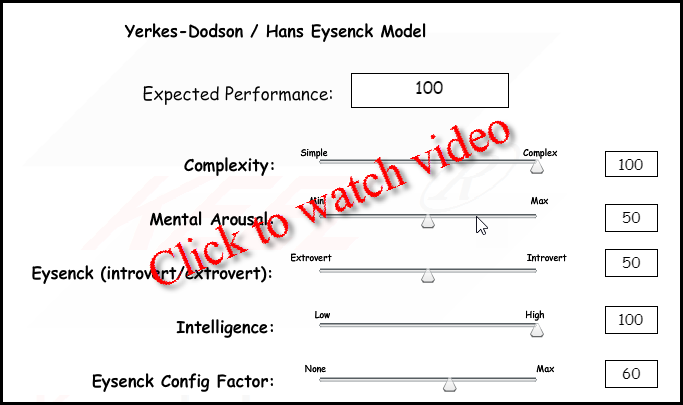
Background
Yerkes-Dodson / KEEL Technology (Demo / Simulation)
From Wikipedia, the free encyclopedia: Yerkes-Dodson
"Yerkes-Dodson law
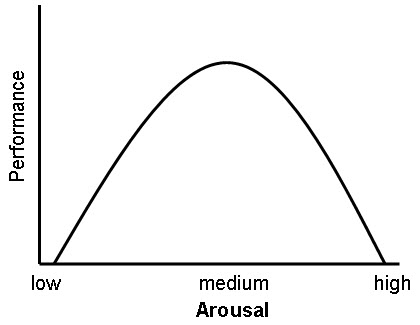
The Yerkes-Dodson Law is an empirical relationship between arousal
and performance, originally developed by psychologists, Robert M. Yerkes and J.
D. Dodson in 1908.[1] The law dictates that performance increases with
physiological or mental arousal, but only up to a point. When levels of arousal
become too high, performance decreases. The process is often illustrated
graphically as a curvilinear, inverted U-shaped curve which increases and then
decreases with higher levels of arousal.
Research has found that different tasks require different levels
of arousal for optimal performance. For example, difficult or intellectually
demanding tasks may require a lower level of arousal (to facilitate
concentration), whereas tasks demanding stamina or persistence may be performed
better with higher levels of arousal (to increase motivation).
Because of task differences, the shape of the curve can be highly
variable. For simple or well learned tasks, the relationship can be considered
linear with improvements in performance as arousal increases. For complex,
unfamiliar, or difficult tasks, the relationship between arousal and
performance becomes inverted, with declines in performance as arousal
increases." |
The KEEL Model:
Our interpretation of the above sentence modeled in KEEL shows the shape
of the curve changing from linear (simple) to bell (complex).
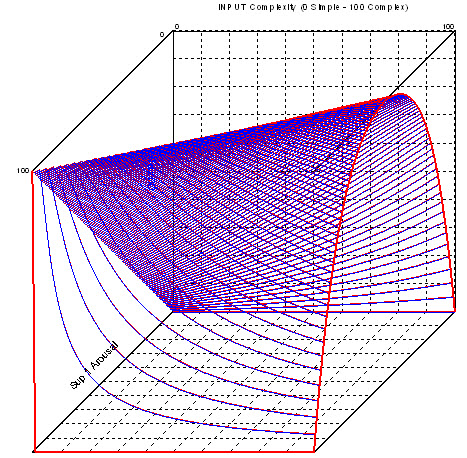
When we discussed Yerkes-Dodson with Dr. Dave Osmon (a neuropsychologist
at UWM), he suggested we look into the work of Hans Eysenck relative to how
introverts and extroverts might impact the model.
From Wikipedia, the free encyclopedia: Hans Eysenck
| "The major strength of Eysenck's model was to provide detailed
theory of the causes of personality. For example, Eysenck proposed that
extraversion was caused by variability in cortical arousal: "introverts are
characterized by higher levels of activity than extraverts and so are
chronically more cortically aroused than extraverts".[3] While it seems
counterintuitive to suppose that introverts are more aroused than extraverts,
the putative effect this has on behaviour is such that the introvert seeks
lower levels of stimulation. Conversely, the extravert seeks to heighten his or
her arousal to a more optimal level (as predicted by the Yerkes-Dodson Law) by
increased activity, social engagement and other stimulation-seeking
behaviors." |
We took the bell shaped curve for complex models and "bent" it for
introversion and extroversion.
First the normal curve:

Now the curve shifted to the left for an introvert that needs less
arousal to obtain maximum performance.
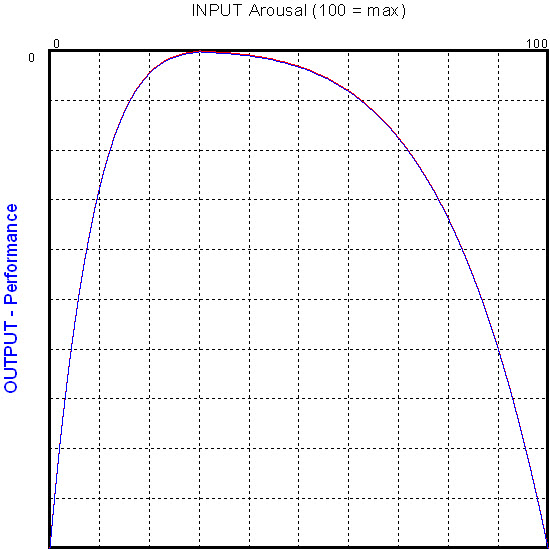
Now the curve shifted to the right for an extrovert that needs more
arousal to obtain maximum performance.
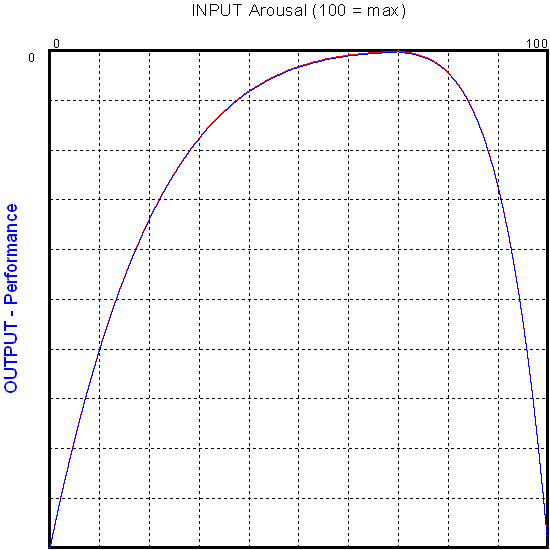
When we created the KEEL "engine" for this "Yerkes-Dodson" / "Eysenck"
model we (with full lack of knowledge) decided how much the introvert /
extrovert shift could be. We added a tuning adjustment so the shift could be
more or less. The graphs above show a configuration value of 60.
While we don't know if the level of performance might be shifted up and
down based on Intelligence, we thought it might be an interesting addition.
Since this configuration setting was already built into the KEEL bell shaped
curve imported into the design, we left it exposed.
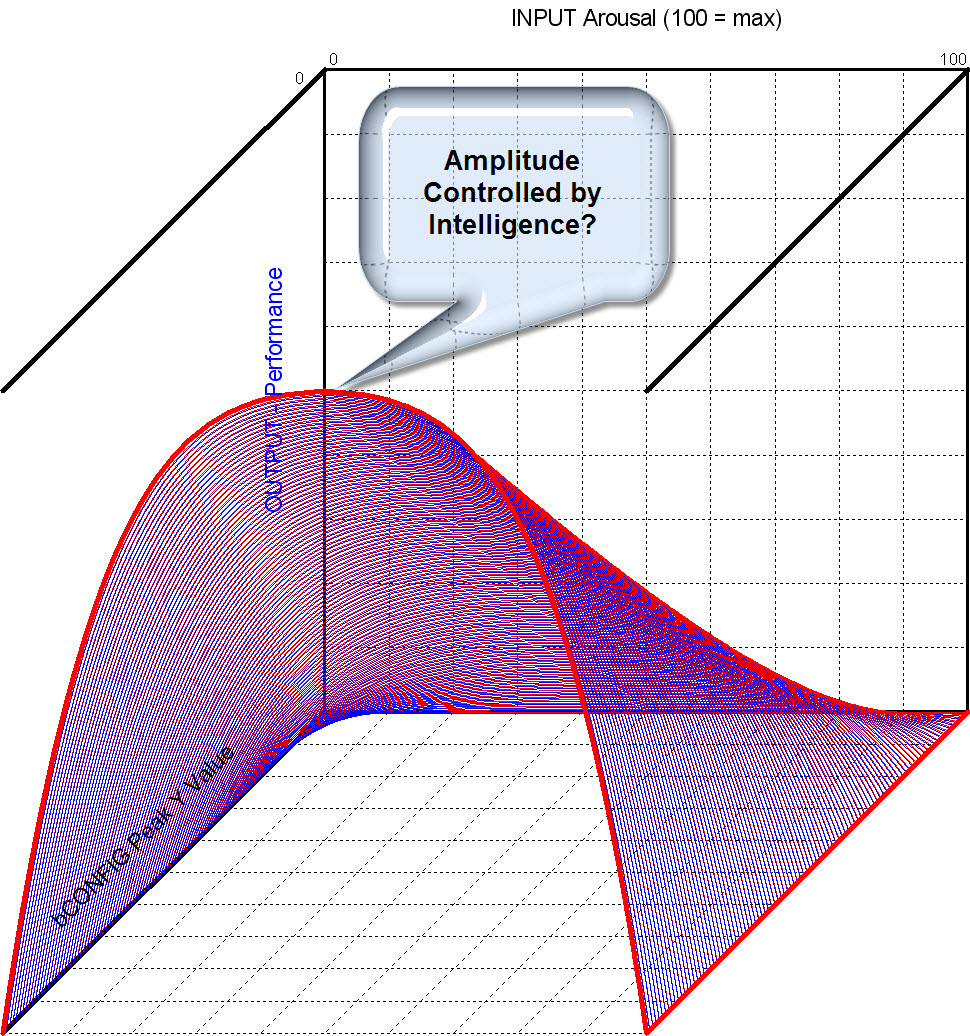
With KEEL, all variables (the inputs) are processed together, so one can
feed it: "
- The level of arousal "
- The level of complexity of the task "
- The measurement of introvert / extrovert "
- The level of intelligence
And obtain the suggested level of performance (the output).
Disclaimer:
This is a demonstration of KEEL's capability and not any kind of
suggestion about the relative merits of Yerkes-Dodson, Eysenck, or even the
self assigned impact of intelligence.
Special Thanks: "
- Thanks to Dr. Jeff Besser (Academic and Industry Liaison Office of
the Chief Engineer - SPAWAR) who suggested investigating the model. "
- Thanks to Dr. Dave Osmon (University of Wisconsin, Milwaukee) who
highlighted errors with my first pass.
Background Documentation in pdf
form
|
Copyright , Compsim LLC, All rights reserved
|







